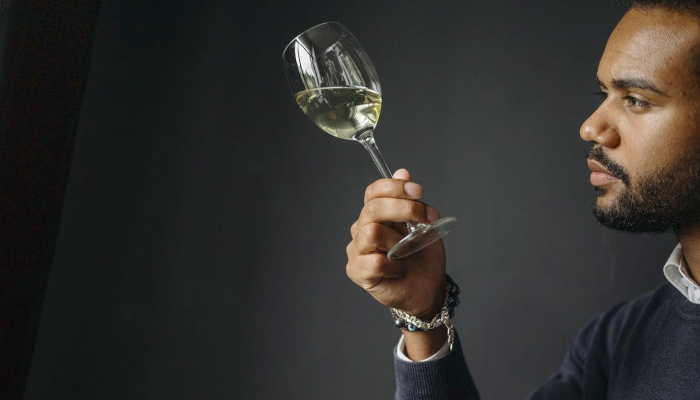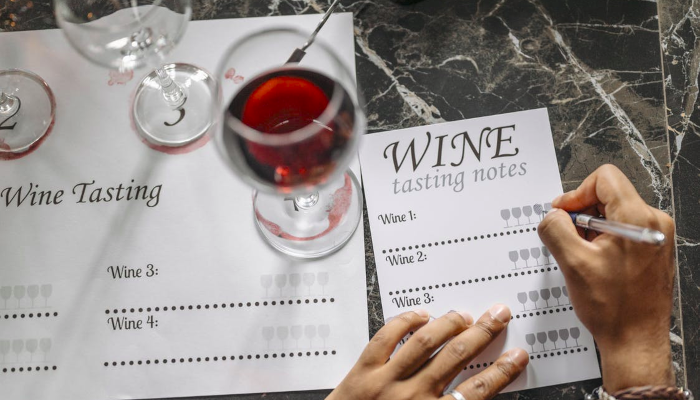How to Taste Wine
The wine tasting process is the same for wine experts, sommeliers and anyone who works in the world of wine. Discover all steps here.

At the end of a busy day, or week, we all like to open our favourite bottle of wine and have a glass, sometimes it’s a very large glass and say "Ah! I needed that" or, "That’s nice". But did we actually taste the wine?
We eat several times a day, yet, when we go out for a meal for a special occasion, we often savour the food and enjoy the experience. We should do the same, every time we have some wine; it’s not that difficult.
You don’t need any specialist equipment, just a glass, the wine and yourself. As long as you don’t have a cold, as we all know when we have the sniffles, we lose our sense of smell and taste, and you are all set to taste the wine.
The wine tasting process is the same for wine experts, sommeliers and anyone who works in the world of wine and they all started out as a beginner, remember that. The art of wine tasting follows 3 basic steps.

Step 1 – Pour and Behold
The wine colour spectrum is not just red, white, or rose it has an array of rainbow colours. Next time you open a bottle take a few seconds and look at the magical liquid that is in your glass.: lemon, gold, amber, orange, pink, purple, ruby and garnet.
The intensity of the colour is also a factor that adds another dimension, from a light paleness to a deeply concentrated hue.
Remember there will be bubbles for sparkling wine and, with more natural wines on the market, these often have a haze and sediment can be seen.
We eat with our eyes, we drink with our eyes too. So those few seconds of looking at your glass will start your brain thinking about what this beauty will taste like.

Step 2 – Swirl and Sniff
This is a tricky element because you will need to make sure you don’t spill any of the wine in your glass as you swirl. We need to swirl the wine around as this releases all those beautiful aromas for you to breathe in: apple, pear, citrus, stone fruit, spice, vanilla, herbs, honey and the tropics
Take a big inhalation, and maybe close your eyes, as you try and pick out all those lovely aromatics and layers of smells. Some will be pronounced whilst others will be quite delicate and hard to pick out.
Don’t be daunted by what the label tells you should be smelling or by what others can smell, just concentrate on yourself and allow yourself the pleasure. You now deserve a drink!

Step 3 – Drink, Taste and Analyze
Take a good slurp and swill it around your mouth to get the wine to pass over all your taste buds on your tongue, the insides of your cheeks and your gums. After you swallow, think about what you can taste and also the physical reactions in your mouth.
Again, don’t worry about picking out every single element, that will come with practice, focus on the fruit. Is there green fruit: apples and pear; citrus fruits: lemon, lime, grapefruit; maybe there are stone fruits or tropical fruits? In red wine tasting, are the fruits red or black?
There are lots of other flavours that might be there like spice, herbs or floral notes. Some wines will suggest vanilla, chocolate, smokiness, coffee and savouriness.
Think about the reactions in your mouth. Did your mouth water? That’s the acid and the higher the acidity the more saliva your produce. Is there a drying sensation from drinking red wine? Those are the tannins see the Tannins in Wine blog for more.
Then there are all the reactions on your tongue. Sweetness is felt on the tip, saltiness around the edge, sourness on the sides towards the back and bitterness right at the back. Umami flavours are all over your tongue.
The list is very daunting but doesn’t look for everything when you first start out. It soon will become second nature and you will pick out more as you fine tune your palate.
Repeat the steps and see if you can pick out any other aromas, flavours or textures. Try not to be too analytical there are not always countless things to find.

Advanced Tasting!
Once you feel comfortable with the wine tasting techniques for beginners, the next things to think about are balance, length, intensity and complexity.
Balance is about how well the components of the wine fit together, i.e. its acidity, the fruit, sugar, tannins and flavours. A high acid wine, for example, sauvignon blanc, needs to have a good concentration of fruit and/or sweetness to balance it out otherwise it will be unpalatable.
These days due to better winemaking there is no excuse for a poorly balanced wine, as the producer can add sugar, acid and tannins to help balance their wines.
Length is simply the sensation left in your mouth after you have swallowed the wine. Is it long and lingering, or is there a bitter aftertaste? If the fruit sensation disappears quickly it is described as short.
Intensity is how powerful the flavours are and how well-defined they are. If the wine feels diluted and you can only taste citrus then the wine will be simple. However, if there are lots of flavours and you can pick out lemon, lime, and grapefruit then this will be a better wine.
Complexity is how many different layers of flavours you can taste that are clearly defined.
Conclusion
Although it is fun to savour wine by yourself it is good to practice with others so you can share and learn from each in your tasting experience. This will certainly enhance your wine appreciation. Plus it’s always fun to taste wine, especially after a busy day, or week.
You may say, "That’s nice with its deep yellow hue, aromas of stone fruits and blossom. Apricot and spice on the palate".